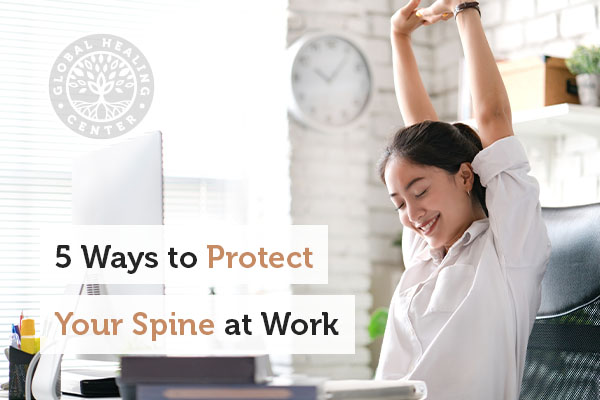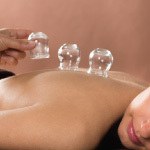
Regardless if you have a job that requires a lot of heavy lifting, or you spend most of your days at a desk, or do something in between, back injuries are something you always want to avoid. They can happen really easily from physical strains, and many people don't realize that they can happen just as easily under conditions that don't immediately appear as strenuous. It doesn't matter where you work or what you do, protecting your spine is a must.
How to Protect Your Spine at Work
Sitting all day has been linked to an increased risk for metabolic syndrome, a catch-all term for concerns that include obesity, type 2 diabetes, and high blood pressure. [1] Not only that, prolonged sitting can put your spine in a vulnerable position and lead to concerns. It's a good idea to get up and move around, stretch, and be mindful of your posture. Let's look at five ways to reduce your risk for back injuries at work.
1. Fidget More
While the extra movement may provide a slight boost in metabolic rate, some research has found that fidgeting and moving throughout the day might also provide benefit for reducing spine injury. Doing back stretches and small twists at your desk can help your spine's flexibility and strength. [2]
2. Use a Standing Desk
Some times it just feels good to stand up. Why? Because standing can help reduce lower back pain by reducing the pressure placed on the spine following a sitting position. If this describes you, investing in a standing desk may be helpful. We actually have a team member at Global Healing who uses a standing workstation. He's said that the ability to move around in his area helps his creativity.
3. Be Conscious of Your Posture
The old school marm was right, sit up! Whether you’re walking or sitting, always be conscious of how you are positioning your spine! Are you slumped over and leaning toward your computer to see your work? Your chair is shaped the way it's shaped for a reason. Your back should be rested against your chair’s back support, and your computer should be above your waist but not over your head. [3]
4. Push, Don’t Pull
A lot of experts agree, when it comes to heavy lifting, make sure that you push instead of pull. Pulling puts a lot of tension on your the spine, with pushing allows you to use more arm and leg strength. Whether you are arranging office furniture or simply decorating, always push large, heavy objects to avoid unnecessary strain.
5. Foot Orthotics
If you've already had back pain on the job, foot orthotics are a tool that can dramatically improve the quality if your day, especially after an injury. They've been found to be helpful for reducing symptoms associated with back pain and just making your spine feel more at ease and less tense. [4]
One Final Thought
References (5)
- Hamilton MT, Hamilton DG, Zderic TW. Role of low energy expenditure and sitting in obesity, metabolic syndrome, type 2 diabetes, and cardiovascular disease. Diabetes. 2007 Nov;56(11):2655-87.
- Johannsen DL, Welk GJ, Sharp RL, Flakoll PJ. Differences in daily energy expenditure in lean and obese women: the role of posture allocation. Obesity (Silver Spring). 2008 Jan;16(1):34-9. doi: 10.1038/oby.2007.15.
- Se-yeon Park and Won Gyu Yoo. Effects of the Sustained Computer Work on Upper Cervical Flexion Motion. J Phys Ther Sci. Mar 2014; 26(3): 441-442.
- Ferrari R. Effect of customized foot orthotics in addition to usual care for the management of chronic low back pain following work-related low back injury. J Manipulative Physiol Ther. 2013 Jul-Aug;36(6):359-63. doi: 10.1016/j.jmpt.2013.06.002.
- Carolyn M. Gatty, Mynde Turner, Dinice J. Buitendorp, Heather Batman. The effectiveness of back pain and injury prevention programs in the workplace. Work: A Journal of Prevention, Assessment and Rehabilitation. Volume 20, Number 3. 2003. 257-266.
†Results may vary. Information and statements made are for education purposes and are not intended to replace the advice of your doctor. If you have a severe medical condition or health concern, see your physician.







